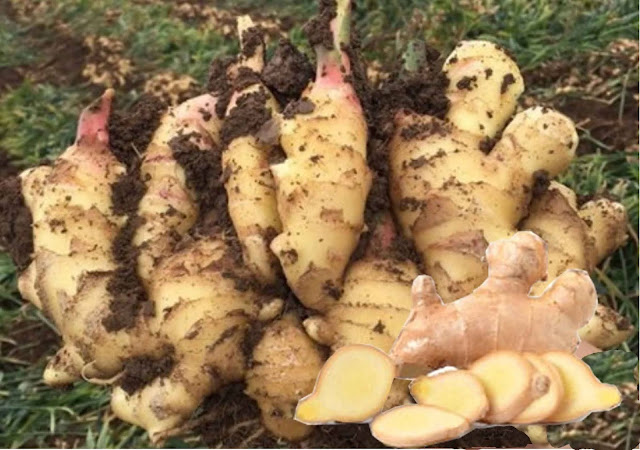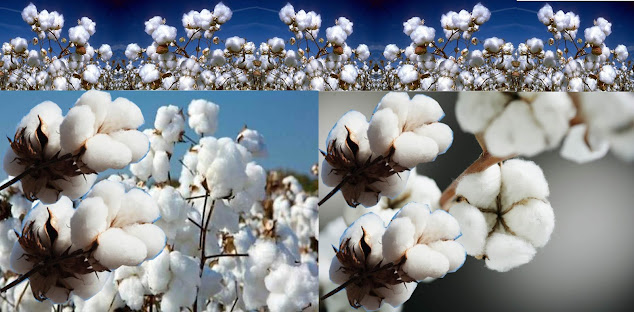Ginger Farming Full Information
Ginger आले ( अद्रक )
Medium quality, well-drained and well drained soil is suitable for cultivation of this crop. The alluvial soil along the river is suitable for growing tubers. If you want to cultivate ginger in light soil, you should use a lot of manure, compost or green manure so that the yield of ginger is good. Depth of soil to a pan, which impedes rooting. I Should be
 Ginger आले ( अद्रक )
Ginger आले ( अद्रक )
Ginger Fertilizer Management
Ginger requires less than 16 nutrients in total. Therefore, when using fertilizers, use balanced and adequate amount of fertilizers. While preparing the land for ginger cultivation, apply 120 kg N (urea), 75 kg potash and 75 kg P (super phosphate) per hectare at the time of planting. Apply half dose of Nitrogen (Urea) fertilizer about 1 month after completion of germination. The remaining half of N should be given after 2.5 to 3 months (at the time of extraction). At that time 1.5 to 2 tons of neem powder should be given.
Ginger cultivates the distance
If weedicides are not used during ginger cultivation, weeding should be done on time and weeding should be done when the crop is 2.5 to 3 months old. For this the soil is moved with a long stick hoe. This causes the roots to break off and new fibrous roots to break out. The ginger crop usually flowers in the fifth to sixth month. They are called hurde bonds. Late pruning should be done before the arrival of hurde bonds (flowers). After the hurdle bond breaks, the growth of leaves of this crop stops and the growth of fungi begins. Apply a light amount of water after weeding, so that the footways burst well. (Income can be reduced by 10 to 15 per cent if left unmanaged)
Ginger crop gap
Care should be taken to ensure that the intercrop does not compete with the main crop while intercropping. Ginger can be grown as a distance crop like cilantro, chilli, marigold, tur, guar.
(Naphthalene acetic acid and urea should be used on the 60th and 75th day as recommended to increase the yield and reduce the fiber content.)
Pest control in ginger

1) Tuber fly : -
Ginger crop is affected by tuber blight. The fly is dark in color and resembles a mosquito but is larger in size. The fly lays its eggs near the stem and the larvae nest in open burrows. The larvae infest the fungus due to larval infestation and then the tubers rot (rot).
Remedy : -
To control tuber fly, apply Quinolphos (25% solution) 20 ml as soon as the tuber fly appears. Or 10% carbaryl 20 kg per hectare or dimethoate 15 m. Lee. Mix in 10 liters of water and spray alternately at intervals of 15 days. Spread ferrate (10% granular) at the rate of 25 kg / ha around the trunk of the plant and give shallow water immediately if it does not rain. (Rotten or partially rotted seeds should not be used for planting)

2) Leaf rolling larvae
The leaf-rolling larvae are green in color, wrap the leaf around their body after hatching and eat the leaves inside (Leaf-rolling larvae infestation is seen from the last week of August to the second week of November).
Remedy : -
Collect and destroy the leaves wrapped in larvae. Dichlorvos 10 m. Ltd. Or Carbarin 40 gm per 10 liters of water should be sprayed. (Influenza pesticides should be used if the incidence is high)
3) Trunk borer
The larvae feed on small trunks. As the hole is pierced by this worm, the trunk turns yellow and starts drying out. (Outbreaks appear to be exacerbated during July to October.)
Remedy : -
For control of stem borer larvae apply 10 ml at 1 month intervals. Malathion should be mixed in one liter of water and sprayed alternately.
Ginger crop diseases
1) Mulkuj, Kandakuj (Gadde Kuj)
Ginger root is caused by fungi like Fusarium pithium and Rhizoctonia. Its symptoms are that the leaves are drying from the tip to the stem. Also, at the beginning, the tops of the leaves turn yellow with dull edges and dry up to the bottom. The underground part of the khanda is dark gray in color and when the soil of the yathik is set aside, the gaddi also appears to have turned black and faded. The disease mainly affects nematodes or weeds, if the tuber is injured during intercropping, it causes fungus outbreak and the tuber starts to rot.
Remedy : -
Ground water should be drained. Also the tubers to be used for planting are Carbendazim 15 gm + Ecalux 20 ml. Soak the tubers in 10 liters of water for 20 minutes. Only disease free seeds should be used at the time of planting. If the disease is found in the field, fungicides should be sprayed alternately.

2) Dots on the page
The disease starts on the leaf and then spreads all over the leaf. Numerous round spots are formed on the leaf.
Remedy : -
If such spots are found on the leaves, spray 25 to 30 gms of Mancozep or 10 to 15 gms of Carbendazim mixed in 10 liters of water per spray (depending on the weather conditions, spray the fungicides at intervals of 15 to 20 days in September to November).
3) Nematodes
The nematodes absorb the sap from the roots. As a result, the growth of the crop is stunted and the leaves turn yellow. The fungus, which causes cauliflower, is easily exposed through the holes made by nematodes.
Remedy : -
For control of nematodes at the time of planting, 5 kg Trichoderma + well decomposed manure per hectare should be mixed or 25 kg ferrate (10 g) per hectare should be mixed in the soil or 18 to 20 quintals of neem powder should be mixed in the soil.
(🙏 A humble request to the farmer friends. If you like the information, please share it with your fellow farmers so that they too can benefit from it.)

Comments
Post a Comment